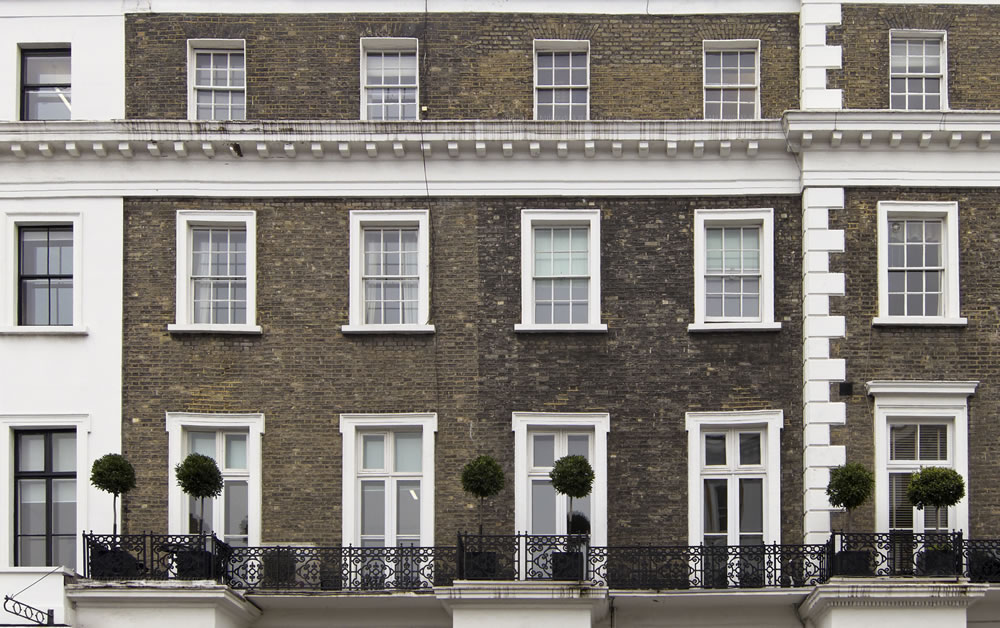For those after an opening definition, a sash window is a window constructed of one or more moving panels, or “sashes”, that hold panes of glass together, whilst also functioning to slide open either horizontally or vertically. First and foremost, the function of a sash window is exactly that: a window. They are a structural necessity to allow light and air circulation into any room. But their place as an elegant and charming feature to your home should not be overlooked.
Whether you are looking to replace, repair, or incorporate sash windows into your home, there are many aspects to consider. From mechanics, to materials, to style, careful thought must be taken to ensure your sash windows are adding that little touch of luxury, tradition and class. With that in mind, we have compiled the perfect guide to sash windows featuring all you need to know about functions, styles and materials.
And for those living in the heart of England, the home to many unique properties, a lot of which feature this British architectural trademark, we suggest visiting Repair a Sash for your sash window installation service in London.

The mechanics of a sash window
Quite simply, sash windows work on a pulley system – rails, linings, weights and cords work together in harmony to create a functioning, moveable window.
Each sash window consists of a pair of individual window frames, also known as “sashes”, that are each suspended within the window by sash cords. Connected to the sash cords are heavy sash weights, usually lead or cast iron, that allow each individual frame to be opened and closed.
The intricate mechanisms that make the window move are hidden within the window frame allowing homeowners to enjoy this beautiful home feature without the eyesore of the working mechanism.
Sash window styles
Sash windows were a hallmark of British homes during the 17th, 18th and 19th centuries, therefore the styles of sash windows tend to reflect the characteristics of whichever era they were built in.

Georgian
The earliest style of sash windows features a six over six design; a grid of six panels of glass on each sash. Born in a time where the demand for well-lit rooms was high, but the glass technology was limited, the result was a combination of small planes of glass held together with astragal bars to create the big windows the people were striving for. This style of sash window evokes the essence of elegance and tradition, being among one of the oldest original windows you will find still in use today.
Victorian
With the advance in glass technology came the introduction of a more modern sash window featuring a two over two design; two panels of glass on each sash. The increase in weight from the heavier panels of glass resulted in the introduction of the sash horn, a protruding addition to each sash to strengthen the joints within the window and to prevent the sashes from being opened to far. This addition makes Victorian style sash windows very distinctive.
Edwardian
The perfect middle man, the Edwardian style sash window features a six over two design; six panels of glass on the top and two on the bottom. Sash windows were at the peak of their popularity and style in this era, combining elements from their predecessor styles to create windows with much bigger glass panes to let in even more light. Simple, effective and ever so elegant.

If you have an older home and are considering replacing or repairing sash windows that are already installed, be careful not to lose the period-style aesthetic and quality of the era in which your house was built.
If you are considering installing sash windows into a more modern home, you might find you have a bit more freedom when deciding on the style for your sash windows, but do make sure they fit to the style of your house for a consistent look.
Sash window materials
For those wanting to retain the traditional qualities of a sash window, timber should be your material of choice. When sash windows were first being built timber was the key ingredient, so those striving for that classic, traditional aesthetic should look towards genuine timber. This material is long lasting, if taken care of properly, and can be given a modern makeover with different finishing colours and stains.
UPVC, also known as Unplasticized Polyvinyl Chloride, is a modern substitute for painted wood. These days, most windows in most houses are made from this material. With a wide range of colours and finishes, this low maintenance material can be cheaper than timber and sometimes better quality. If you are planning to renovate sash windows in an older house however, you may want to consider whether UPVC fits with the style or the rest of your home.






















